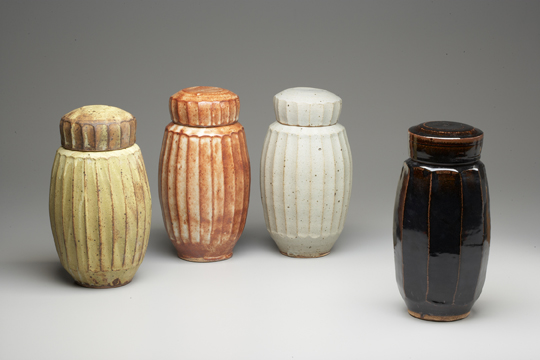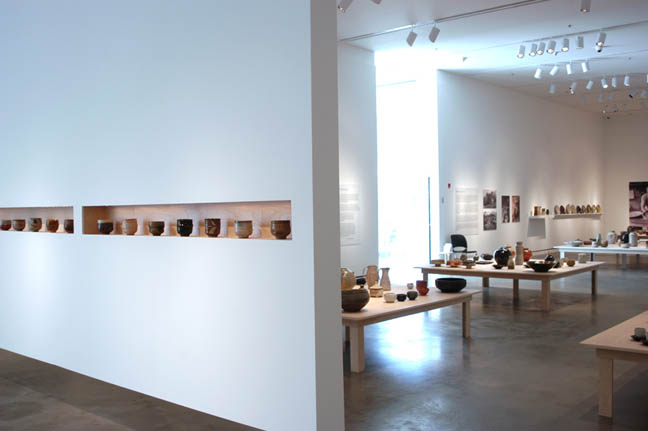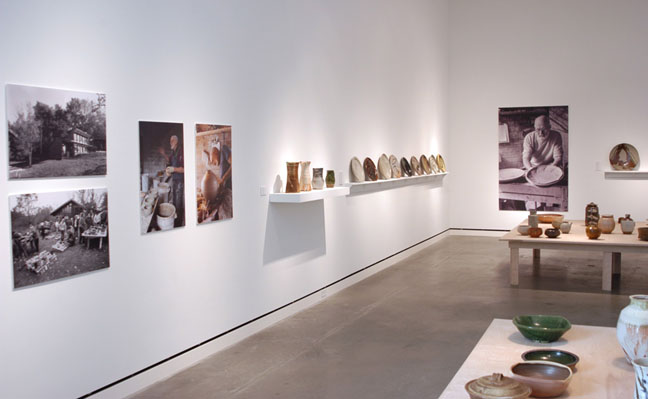Minnesota Master: Warren MacKenzie
Mason Riddle went to see "Warren MacKenzie: Legacy of an American Potter," at the Rochester Art Center. Read her take on this retrospective of one of America's living treasures





If you like pots, covet pots, or want to learn more about pots, a trip to the Rochester Art Center (RAC) to see Warren MacKenzie: Legacy of An American Potter is mandatory. For the uninitiated, MacKenzie is recognized internationally for his close-to-the-heart holistic philosophy of life, his ceramics, and teaching. He is known for his simple utilitarian pots created in the mingei (Japanese/Korean folk craft) tradition and never have there been more of his functional “honest pots” on view at one time.
Beautifully installed in RAC’s expansive, high-ceilinged gallery, the exhibition was organized by former RAC director B. J. Shigaki and curated by Kris Douglas, and it features more than 350 ceramic pots of all persuasions – platters, bowls, teapots, vases, lidded jars, pitchers, plates and cups. The earliest works date to 1948. Numerous pieces are from the collection of MacKenzie and his artist wife, Nancy, but dozens are from major museums and private collections from across the country, confirming this as a rare opportunity to assess the trajectory of Mackenzie’s ceramic practice.
MacKenzie’s lifelong commitment to making unpretentious, functional vessels is well known and in some circles even legendary. These are pots to be used on a daily basis, held in the hand and admired. Although understated, they reveal a sophisticated fusion of form, function, and glaze that results in a quietly seductive object, a quality that Italians might call simpatico. For decades, friends, collectors, unknown devotees, and students from here and around the globe have visited MacKenzie at his studio on a rural Stillwater, Minnesota, farm which he and his first wife Alix (d. 1962), a potter, purchased in 1953. They also opened a shop to sell their work and, later, the work of other potters. (In December 2006 the shop was closed.)
The primary influences on MacKenzie’s work, which is largely glazed stoneware, are the eminent British potter Bernard Leach (1887-1979), in whose St. Ives studio MacKenzie and Alix trained from 1949-52; the Japanese mingei potter Shoji Hamada (1894-1978); and the philosopher-writer Soetsu Yanagi (1889-1961) who celebrated mingei in his book The Unknown Craftsman. MacKenzie is also inspired by Korean folk pottery.
Born in 1924, MacKenzie is recognized by many as the American master of ceramic art in the mingei tradition. He began his artist career as a hard-edge painter at the School of the Art Institute of Chicago, where he met Alix Kolesky. After serving in the Army in Yokohama, Japan, during WWII in he returned to Chicago, on the GI Bill. When all of the painting classes were full, he took a ceramics class. The rest, as they say, is history. In 1948 he and Alix moved to Saint Paul to work at the Saint Paul Gallery and School of Art, now the Minnesota Museum of American Art.
It was during their apprenticeship with Leach at St. Ives that they met Hamada and other potters. According to MacKenzie, at St. Ives he learned how to throw pots on a wheel and how to operate a small pottery. But it was Hamada that influenced his philosophy on life and his aesthetic. In 1954 MacKenzie joined the faculty of the University of Minnesota, where he taught ceramics until 1990, when he retired and became a Regents Professor Emeritus. In 2003 the ceramic studios in the U of M’s new Regis Center for Art were named in his honor.
For some, this exhibition–with its eight low wooden tables covered with ware, its vitrines, narrow display shelves, projected video, and mural-size photographs– may shed new light or even a new perspective on MacKenzie’s development as a potter. For the uninitiated, it will be a full-immersion baptism into the life of a working potter and the rich potential of the simple utilitarian pot.
The 136-page exhibition catalogue, which comes in a handmade wooden box, features essays by Catherine Futter, Curator of Decorative Arts at the Nelson Atkins Museum, and Rob Silberman, Associate Professor at the University of Minnesota. It’s is well worth the $50 price tag.